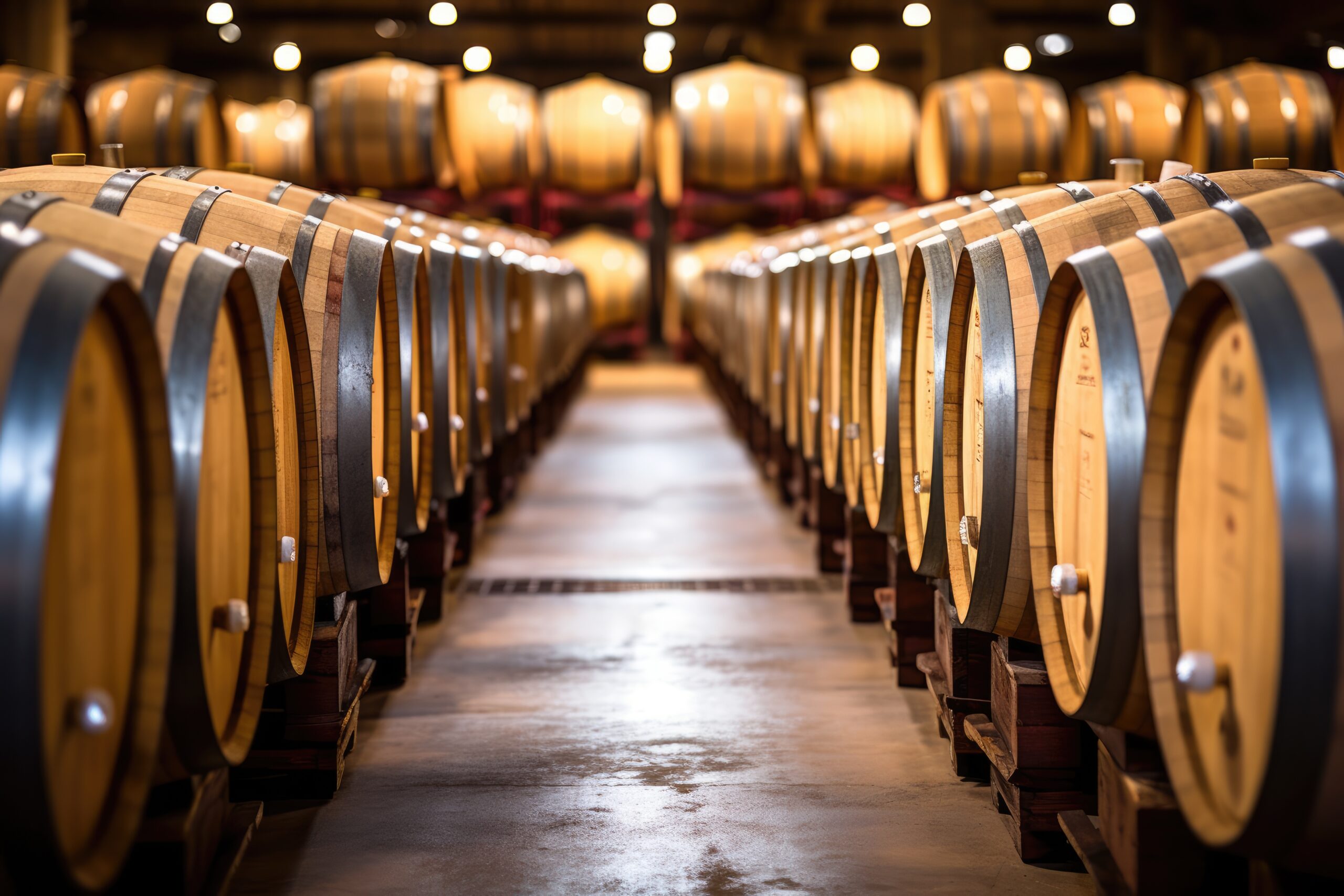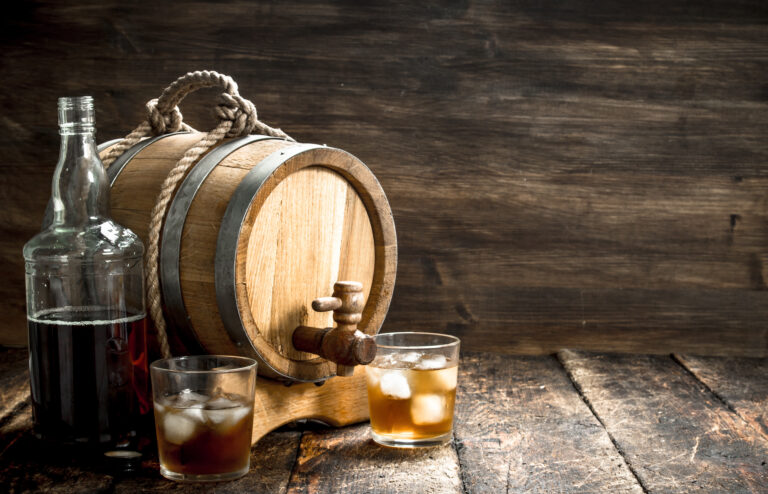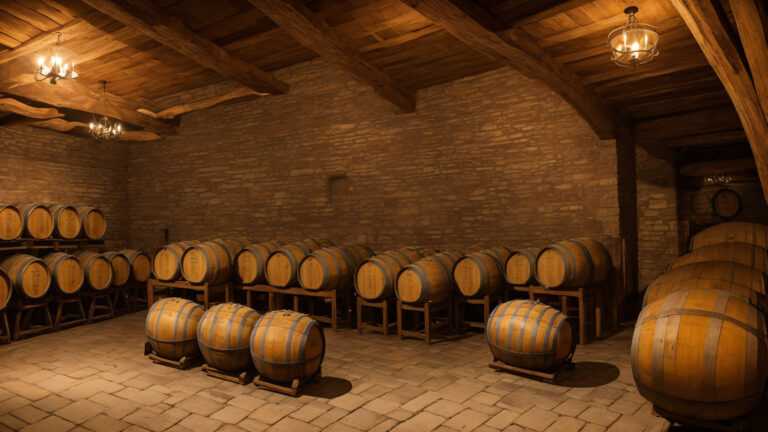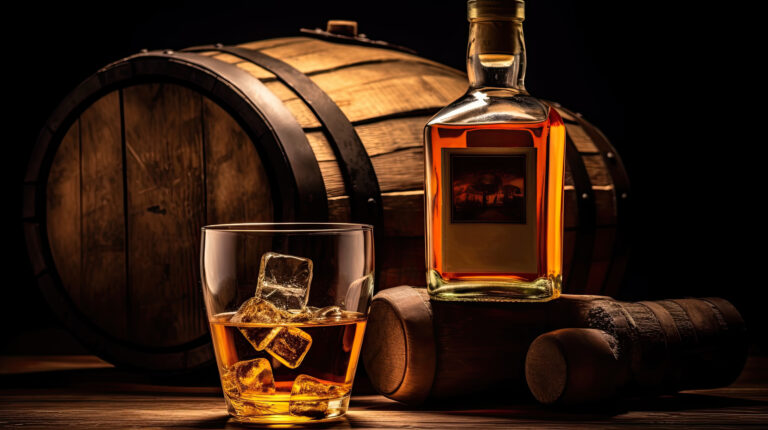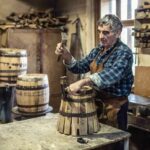So you’ve decided to dabble in aging your own whiskey. Congrats! There’s nothing quite like tasting the fruits of your own labor. But now that you’ve got your 5-gallon barrel, how long should you age your whiskey to get the flavor you’re after? The answer depends on the type of whiskey you’re making and how much oak influence you want. Aging whiskey is part art and part science. While you can’t go wrong aging for at least a year, many distillers recommend starting with a shorter aging period, then tasting regularly to determine if it’s ready or needs more time. The good news is, with a small barrel, the aging process happens faster. In just 6-24 months, you can have a smooth, oak-infused whiskey. The key is tasting often and bottling when it tastes perfect to you. Aging whiskey at home is deeply personal – you get to create a spirit suited exactly to your tastes. So relax, there’s no “right” answer. With patience and a little experimenting, you’ll be sipping your own aged whiskey in no time.
Introducing Whiskey Aging in Small Barrels
Aging whiskey in 5-gallon barrels allows for experimentation at home. The smaller size means the aging process happens faster, so you can taste the results sooner.
Within the first month, you’ll notice the whiskey darkening and the flavor becoming smoother. After 3-6 months, the distinctive oak and vanilla notes emerge. At the year mark, the whiskey achieves a balanced, mellow character.
Be sure to fill the barrel completely to minimize air exposure. As it ages, some whiskey evaporates—this is the “angel’s share.” Top off the barrel with more whiskey to keep it full.
Periodically sample your whiskey to determine when it’s reached your preferred flavor. The aging can then be stopped by bottling and enjoying your creation. Or continue aging for an even smoother, more complex spirit.
Aging whiskey in small barrels allows you to experiment with different types of wood, char levels, and aging environments. You can create a variety of distinctive, handcrafted whiskies to enjoy for years to come. Who knew a little patience could yield such sweet rewards?
The Science Behind Barrel Aging of Whiskey
The aging process is really an art form. As whiskey sits in the charred oak barrel, several chemical reactions happen that give aged whiskey its signature flavor and color.
Evaporation and the Angel’s Share
Some of the alcohol in the barrel evaporates over time. This is known as the “angel’s share”. The barrel aging process typically lasts 3 to 30+ years. The longer it ages, the more alcohol evaporates.
Oxidation
Oxygen interacts with the whiskey, mellowing the flavor and creating nutty or sherry-like notes. The oxidation process helps smooth out harsh, bitter flavors from the distillation process.
Extraction
The whiskey extracts flavor compounds like vanillin from the charred oak barrel. This gives aged whiskey flavors of vanilla, caramel, and butterscotch and a brown color. The longer it ages, the more flavor it picks up from the barrel.
Blending and Finishing
Whiskeys from different barrels are often blended together before bottling to create a consistent flavor. Some whiskeys are also “finished” in a different barrel, like a sherry or port cask, to impart more flavor before bottling.
The aging alchemy is a delicate process, but when done right, it creates a whiskey that is far more complex and flavorful than its clear, distilled spirit. Patience, my friends. Good whiskey is worth the wait.
Factors That Impact Whiskey Aging Time
The aging time for whiskey in a 5 gallon barrel depends on several factors. The type of barrel used, storage conditions, and specific ingredients in your mash bill all impact how long it needs to mature.
Barrel Type
The barrel material significantly affects aging. Oak barrels, especially charred American white oak, are traditional and ideal. Oak barrels impart more flavor to the whiskey as it ages. Other woods like maple or hickory won’t impact the whiskey as much.
Storage Conditions
Keep your barrel in a spot with steady, moderate temperatures. Temperature swings can cause the whiskey to age unevenly. Also, minimize exposure to direct sunlight or harsh lighting. A dark, cool environment is best. The ideal aging temperature for most whiskeys is around 55 to 65 degrees Fahrenheit or 13 to 18 degrees Celsius.
Mash Bill
The specific grains used in your mash bill also determine how long aging takes. A mash bill heavy in corn or wheat may need less time to age compared to one heavy in barley or rye. Barley and especially rye contain more complex starches that often require longer aging to mellow and develop flavors.
In the end, aging whiskey in a 5 gallon barrel could take 6 months to 3 years or more depending on these factors. Taste your whiskey regularly to determine when it’s achieved a flavor you enjoy. The longer it ages the more complex the flavors become, but you want to bottle it before it gets over-oaked. With some experimentation, you’ll discover what aging time is right for your barrel and tastes.
Recommended Aging Times for 5 Gallon Barrels
For a small 5 gallon barrel, aging times will typically be shorter than larger barrels. Here are some general recommendations to get you started:
- 3 to 6 months for a light, fruity flavor. After a few months, you’ll start to notice flavors from the wood and a slight color change.
- 6 to 12 months for more pronounced oak and vanilla flavors. The whiskey will take on an amber color and smokey, spicy notes.
- 1 to 2 years for a balanced, medium-bodied whiskey. The flavors become very complex with hints of dried fruit, nuts and chocolate.
These are just suggestions. You can taste your whiskey at regular intervals to find the flavor profile you like best. Then bottle it and enjoy! Keep in mind that as the barrel breathes, a small amount of whiskey is lost to evaporation and absorption by the wood. This is known as the “angel’s share” and can be up to 2-3% per year.
While aging whiskey longer will result in a more premium product, you run the risk of over-oaking it in such a small barrel. It’s best to bottle your whiskey once it reaches a point you’re happy with. You can then use the barrel again to age another batch of whiskey or for finishing and imparting flavors to other spirits.
With some experimentation, you’ll be making custom aged whiskeys in no time! The key is starting with a quality distillate and using fresh charred oak barrels for the best results. Let your senses be your guide and most of all, have fun with the process!
Tasting and Testing Your Whiskey Over Time
As your whiskey ages, its flavor profile will change. After a few months, take a small taste to see how it’s progressing. Pour a shot and nose it to detect the aromas, then take a small sip. Notice how the harsh, sharp edges have started to soften and mellow.
After 6-12 months, your whiskey will develop more complex flavors. You may detect hints of vanilla, oak, and caramel. The whiskey will taste smoother and more balanced.
At 18-24 months, the oak flavors become more pronounced. Notes of dried fruit, nuts or spice may emerge. The whiskey will have a long, warm finish.
When aging 2-3 years, the whiskey takes on a deep amber color. Robust oak and vanilla flavors dominate, with layers of dried fruit and nuts. The finish lasts and the alcohol taste has mellowed significantly.
Be patient and let your whiskey age for the full 5 years. At this point, it will have developed a rich, mellow flavor with depth and character unlike any commercial whiskey. Your homemade hooch has transformed into a fine, aged spirit to share with friends.
Pour yourself a dram and appreciate the results of your long-term aging experiment. Your homemade whiskey is ready to drink!
Maximizing Flavor Extraction in a Small Barrel
To maximize flavor extraction in a small 5 gallon barrel, there are a few tips to keep in mind:
Temperature
Keep the barrel in a spot with a consistent, moderate temperature. Fluctuating temps can affect the aging process. The ideal range is between 50 to 70°F. Colder temps will slow aging, while warmer temps speed it up. For the most balanced flavor, 65°F is a good target.
Humidity
Maintain humidity around 65-75%. Too dry an environment can cause excess evaporation, while overly humid conditions promote mold growth. Use a hygrometer to monitor humidity and make adjustments as needed.
Rack
Rack your whiskey by siphoning it from the barrel into a jug or decanter, and then returning it to the barrel. This exposes more surface area of the whiskey to oxygen and the barrel staves, accelerating flavor extraction. Rack within the first month, and then every 3-6 months after.
Rotate
Rotate the barrel a quarter turn every few months. This ensures even exposure of the staves to the whiskey for balanced flavor development. Corning the barrel in a figure eight pattern is most effective.
Taste
There’s no set time for aging whiskey in a small barrel. Taste it regularly after 6-12 months to determine if it’s achieved your desired flavor profile. The aging process moves faster in smaller barrels, so maximum flavor can develop within 18-36 months. But keep tasting, as whiskey can become over-oaked if left too long.
Following these tips will help you get the most out of your 5 gallon whiskey barrel and craft an amazing, full-flavored spirit. The key is balancing all the factors and discovering the sweet spot in the aging process for your tastes. With some patience, you’ll be enjoying the fruits of your labor in no time!
Should You Rotate Small Barrels?
Should you rotate small barrels to age your whiskey? For the best results with 5 gallon barrels, rotation is key.
Moving the Barrels
As whiskey ages, it extracts flavor compounds from the wood. Rotating – or moving – the barrels allows for consistent contact with the wood char during aging. This helps achieve an even flavor extraction, leading to a balanced, complex taste in the finished whiskey.
Without rotation, the whiskey can take on an unbalanced, one-dimensional quality. The area in direct contact with the wood will impart much stronger wood flavors, while parts not in contact end up lacking in wood notes altogether.
For small barrels like 5 gallons, rotating at least once during aging, around 3 to 6 months in, is ideal. Giving the barrel a 180 degree flip will ensure all sides of the barrel are used for flavoring the whiskey. You don’t need any fancy equipment, just carefully tilt and roll the barrel to invert it.
Rotating more frequently, every 2-3 months, will yield an even more harmonious blend of flavors in the end. But for a casual home distiller, one rotation is typically sufficient for a well-rounded flavor in a typical 6-12 month aging period.
While not strictly necessary, barrel rotation is one of the small details that can help turn a good home-aged whiskey into a great one. For the time and effort, it’s worth incorporating into your process. When you taste the results, you’ll be glad you took the extra step!
Blending Whiskey From Multiple Barrels
Blending whiskey from different barrels allows you to create a custom blend with the flavors and aromas you want. Once you’ve aged your whiskey in separate 5 gallon barrels, you can combine them to make a unique batch.
Determine the blend ratio
The ratio you choose depends on the flavors you want to highlight. Maybe you want a blend heavy on the vanilla and caramel notes from the charred oak barrel. Or perhaps you prefer more spice and fruit from the barrel with toasted oak chips. Start with a ratio of 2:1 or 3:1 and then adjust to your taste. You can always blend a little at a time until you find “the one”.
Combine and bottle
When you have your desired blend ratio figured out, simply pour the whiskeys together into a container, stir or swirl gently to combine, and then bottle. Let the blend sit for at least a week before drinking to allow the flavors to mingle and develop. Your custom small batch whiskey is now ready to enjoy!
Blending whiskey at home allows you to tap into your inner master distiller. Don’t be afraid to experiment with different barrel ages, types of oak, and maturation environments. Home blending is a fun, hands-on way to make your very own craft whiskey. With some practice, you’ll be creating amazing custom blends in no time!
How Long to Age Whiskey in a 5 Gallon Barrel – FAQs
Aging whiskey in a small barrel allows for faster flavor development due to the increased surface area to volume ratio. However, it also means the whiskey can become over-oaked more quickly. As a general rule of thumb, check your 5 gallon barrel every 3-6 months to determine if it’s reached your desired flavor.
- For a lighter, fresher whiskey with notes of vanilla and caramel, age for 3-9 months. This works well for bourbon or rye.
- For a more robust whiskey with deeper oak and spice notes, age for 6 months up to 2 years. Scotch styles benefit from aging on the longer end of this range.
- Be very careful going past 2 years, as the whiskey can become unpleasantly woody. It’s best to taste frequently after a year to ensure it does not become over-oaked.
- The aging time will also depend on the type of barrel (char level, wood type) and the barrel’s previous use, if any. A heavily charred or toasted new barrel will age the whiskey faster than a used barrel.
- Don’t forget that a portion of the whiskey (up to 10% per year) is lost to evaporation during aging, so keep that in mind for your final yield.
- Bottle and enjoy your aged whiskey once it reaches your desired flavor! The aging process stops once removed from the barrel.
The keys are to taste frequently, be patient, and bottle at the peak of flavor. With experience, you’ll get better at knowing just how long to age your whiskey in a 5 gallon barrel. Happy aging and cheers!
Final Thoughts
So there you have it, the basics of aging whiskey in a small 5 gallon barrel. The aging time can vary quite a bit depending on the type of barrel, the barrel’s previous use, the climate, and of course personal taste. The best approach is to start checking on your whiskey after a few months to see how the flavor is developing. Once it’s reached a point where you’re enjoying the taste, you’ve found the perfect aging time for your needs. Home aging whiskey is a fun, rewarding hobby that allows you to craft a spirit customized to your preferences. Keep experimenting with different aging periods to find your sweet spot. And most of all, once you’ve created that perfect batch, don’t forget to sit back, relax, and savor the fruits of your labor. Cheers!
